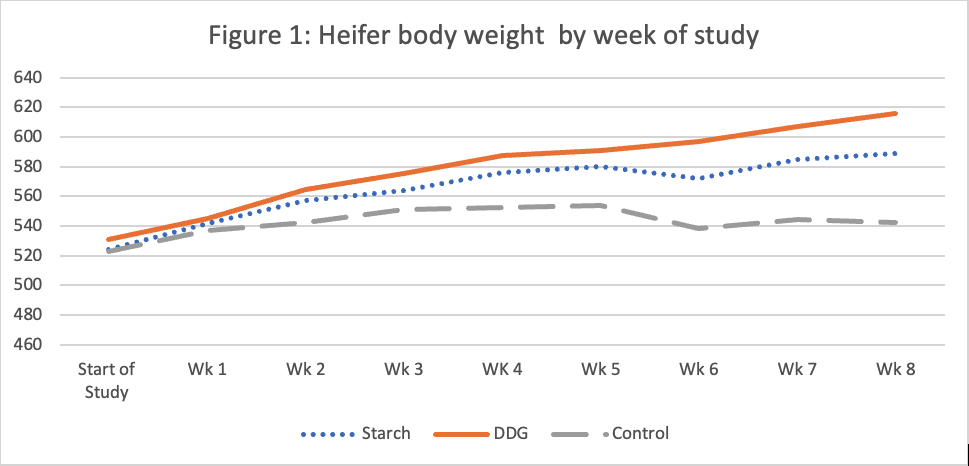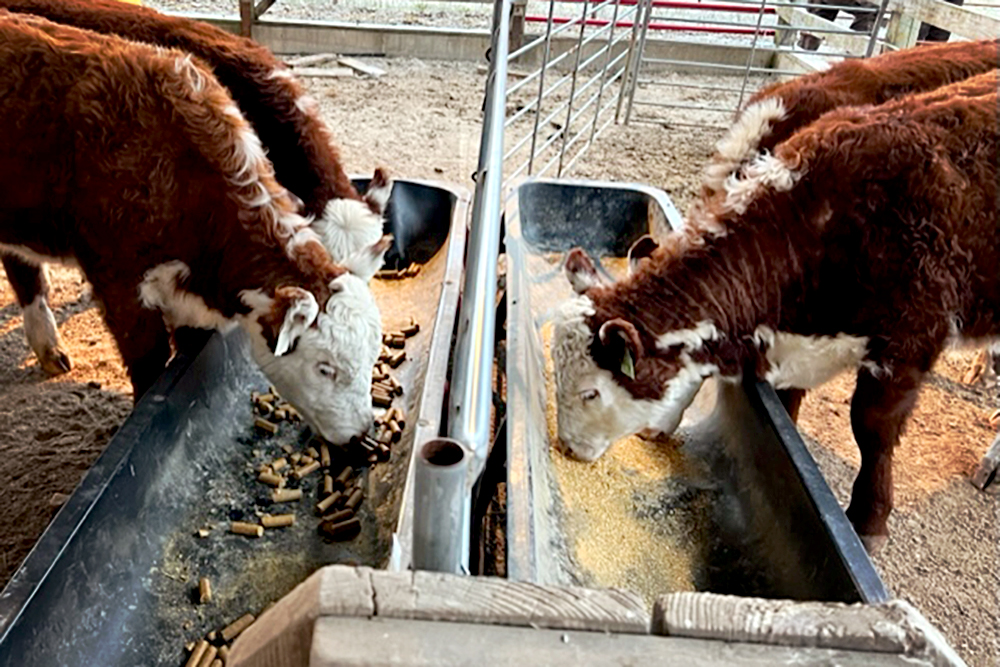Recent research conducted in Oklahoma and Nebraska has given the beef cattle industry a lot to think about when it comes to conventional feeding practices versus new products on the market. Researchers at Missouri State University are picking up the torch and conducting their own studies comparing typical blended rations to extruded distillers grain range cubes.
Last week, Dr. Adam McGee, assistant professor in animal science, completed a side-by-side feed comparison trial testing a traditional high-starch blended ration against MasterHand Milling’s distillers grain cubes. The eight-week study tracked average daily gains on groups of heifers from the University’s purebred Hereford operation.
The trial consisted of three treatment groups. The first group was fed a common starch-based ration (78% corn, 16% soybean meal), and the second group was fed MasterHand Milling 100% distillers grain range cubes. The third group served as a control and received no supplementation. All treatment groups were grazed together throughout the study and hay was provided from the same farm where the cattle were grazing.
“I think the first half of the study they gained really well and in that second half I think the weather played a role, so we didn’t have as good of gains in the second half of the study as we did the first,” McGee said. “But I think it went really well overall.”
Talk with a MHM feed expert to get started. Schedule a consult now!

Heifers supplemented with both the blended ration and the extruded DDG cubes were fed at 0.75% of body weight based on initial body weight and fed in pens of two heifers daily. Each group was given 45 minutes to finish the supplement before it was removed from the pen.
“Both the starch and the DDG were fed at .75% of body weight and that’s a little bit more than what is typically fed in the DDG [but] that is probably consistent for the starch,” McGee said. “But there were some of those days, especially early on, that the DDG groups may not have finished all their feed.”
The heifers were all of similar body weight at the beginning of the study. Results showed significant gain increases in the two supplemented groups over the control with body weights of 589, 615, and 542 pounds for the starch, DDG cube, and control treatments respectively.


“Overall, when we finished this study, the starch group had an average daily gain of 1.16 pounds per day, the DDG group had an average daily gain of 1.51 [pounds per day], and then our control group, which was just on grass, only had an average daily gain of 0.34 [pounds per day,” Mcgee said.
McGee said the results were a little surprising considering the typical practices for developing rations.
“I expected the starch group to gain more the whole way through, especially when we got down toward the end,” McGee said. “When we’re trying to add energy and growth to diets the go-to is usually to add corn, so I was expecting that starch group to be slightly greater than the DDG. But the DDG group really did a whole lot better. In the first week, the starch group had better gains but the rest of the time the DDG group was higher. That could be partially attributed to the forage being a lower quality forage.”

TALK TO A FEED EXPERT
Get Started
Our team of experienced feed experts and cattlemen are ready to help you change the way you feed. Click the link to schedule a consult!

